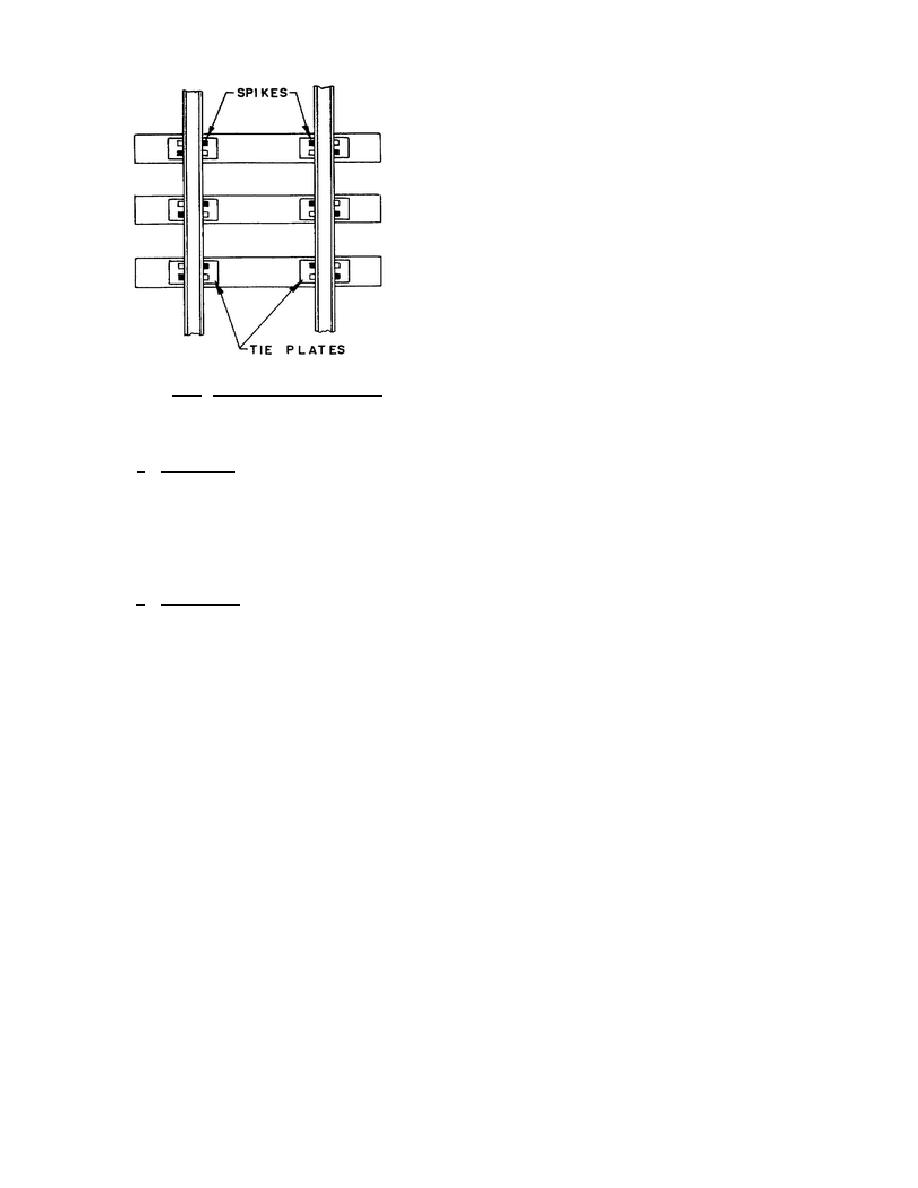
the centerline of the track. Alinement is discussed in
paragraph 1.4 of Reference Text 670. A simple
method to correct poor alinement of tangent track is
to establish the proper alinement on one of the two
rails instead of on the imaginary centerline. The rail
selected is called the line rail, as paragraph 1.23
explains. A rail track liner, figure 1.22, can be used
to line the track; however, an experienced track
foreman can make a fair adjustment to tangent
alinement by eye. But high-speed track must be
alined by using a transit and lining bars or the rail-
mounted liner.
Figure 1.21. Method of Setting Spikes.
The transit and lining bars are discussed in the following subparagraphs.
a. The transit. The accurate alinement needed for highspeed track can be obtained only by using a
transit--a telescope with crosshairs on the objective lens. This is an instrument similar to the one used by
engineers and building contractors to correctly aline the construction each undertakes. The telescope tube is
mounted in bearings so that it can be moved either vertically or horizontally. The bearings may be locked so that
the line of sight is fixed. When the instrument is set over a line rail, the vertical crosshair determines the proper
line for the rail.
b. Lining bars. The line rail is moved to proper position by men using lining bars, such as the one
shown in figure 1.7, to move--throw--the entire track structure. The rail opposite the line rail is brought into
alinement by gaging it with the line rail. Throwing track is discussed more thoroughly in section V of chapter 3
and illustrated in figure 3.9.
1.27.
GAGING
Track foremen check the gage of track frequently. The amount of permissible deviation from true gage
varies, depending on the type of track and the speed of trains. It is possible to use a
26



 Previous Page
Previous Page
